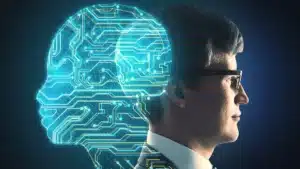In recent years, artificial intelligence (AI) has made remarkable progress in various domains, and one of its most promising applications is natural language processing. Among the notable advancements in this field is ChatGPT, an extraordinary language model developed by OpenAI. ChatGPT has revolutionized conversational AI by demonstrating unprecedented abilities in generating human-like text, engaging in interactive conversations, and providing accurate and relevant responses. In this article, we will delve into the capabilities and implications of ChatGPT, exploring how it has transformed the landscape of human-machine interactions.
Understanding ChatGPT
ChatGPT is built upon the GPT-3.5 architecture, which is a highly sophisticated and state-of-the-art model. It has been trained on a vast corpus of text from the internet, allowing it to develop an exceptional understanding of language patterns, grammar, context, and even nuances. This extensive training empowers ChatGPT to generate coherent and contextually appropriate responses to a wide range of prompts.
Conversational Excellence
The most remarkable aspect of ChatGPT is its ability to engage in interactive conversations with users. It can sustain dialogues across multiple turns and comprehend complex prompts. ChatGPT excels at generating responses that are not only grammatically correct but also contextually relevant, making it feel like conversing with a real person. This advanced conversational capability has significant implications in customer service, virtual assistants, and other interactive applications.
Creative Expression
Beyond its conversational prowess, ChatGPT has demonstrated an uncanny ability to exhibit creativity. It can generate imaginative stories, write poems, compose music, and even offer suggestions for creative projects. By providing prompts and directions, users can witness the model’s impressive creative output. This facet of ChatGPT opens doors to new possibilities, such as collaborating with artists, assisting writers, or simply serving as a source of inspiration for creative endeavors.
Enhancing Human-Machine Collaboration
ChatGPT has immense potential in augmenting human capabilities. Its vast knowledge base, combined with its ability to understand and respond to human prompts, makes it an invaluable tool for information retrieval. It can help users find answers, provide explanations, and assist with research. By acting as a knowledgeable companion, ChatGPT facilitates human-machine collaboration, enabling us to achieve more in less time.

Ethical Considerations
With the power of this chatbot comes the responsibility to use it ethically. OpenAI has been proactive in addressing potential misuse by implementing safety measures and deploying usage policies. However, challenges remain, such as bias in responses, the potential for spreading misinformation, and the need to avoid malicious uses. Continued research, scrutiny, and ongoing improvements are essential to ensure the responsible deployment of ChatGPT.
The Path Ahead
OpenAI has made significant strides in advancing conversational AI with ChatGPT, but there is still room for improvement. The model’s training data and architecture will continue to evolve, incorporating user feedback and expanding its understanding of specific domains. As the technology progresses, we can expect even more refined and contextually aware language models that push the boundaries of human-machine interactions.
Conclusion
ChatGPT has emerged as a groundbreaking innovation in the field of conversational AI. With its ability to engage in interactive conversations, demonstrate creative expression, and augment human capabilities, it has revolutionized the way we interact with machines. However, the responsible and ethical deployment of ChatGPT remains crucial. As we witness the rapid development of this technology, it is our collective responsibility to harness its power for the betterment of society, while addressing potential challenges along the way.
